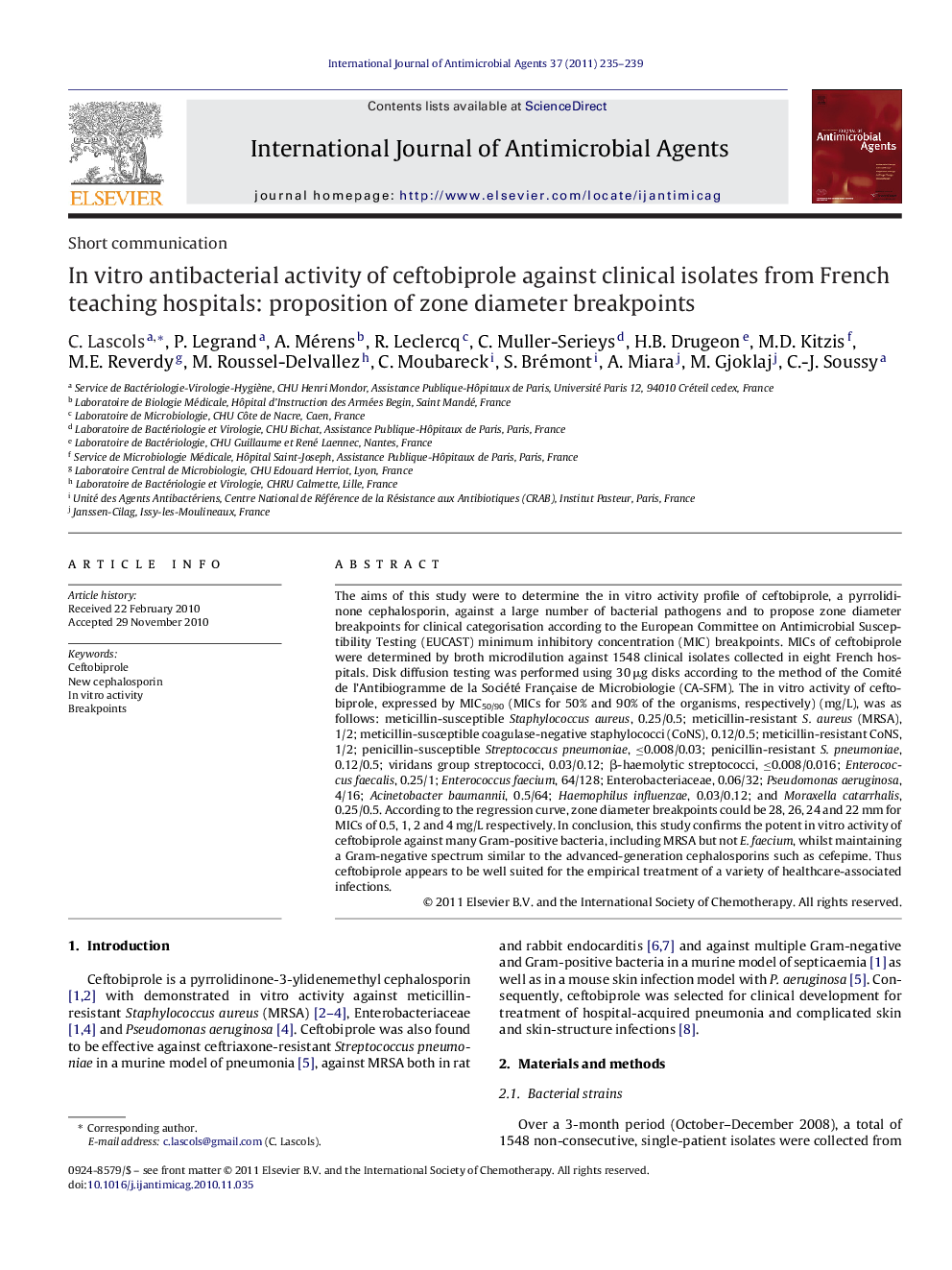| Article ID | Journal | Published Year | Pages | File Type |
|---|---|---|---|---|
| 6118220 | International Journal of Antimicrobial Agents | 2011 | 5 Pages |
Abstract
The aims of this study were to determine the in vitro activity profile of ceftobiprole, a pyrrolidinone cephalosporin, against a large number of bacterial pathogens and to propose zone diameter breakpoints for clinical categorisation according to the European Committee on Antimicrobial Susceptibility Testing (EUCAST) minimum inhibitory concentration (MIC) breakpoints. MICs of ceftobiprole were determined by broth microdilution against 1548 clinical isolates collected in eight French hospitals. Disk diffusion testing was performed using 30 μg disks according to the method of the Comité de l'Antibiogramme de la Société Française de Microbiologie (CA-SFM). The in vitro activity of ceftobiprole, expressed by MIC50/90 (MICs for 50% and 90% of the organisms, respectively) (mg/L), was as follows: meticillin-susceptible Staphylococcus aureus, 0.25/0.5; meticillin-resistant S. aureus (MRSA), 1/2; meticillin-susceptible coagulase-negative staphylococci (CoNS), 0.12/0.5; meticillin-resistant CoNS, 1/2; penicillin-susceptible Streptococcus pneumoniae, â¤0.008/0.03; penicillin-resistant S. pneumoniae, 0.12/0.5; viridans group streptococci, 0.03/0.12; β-haemolytic streptococci, â¤0.008/0.016; Enterococcus faecalis, 0.25/1; Enterococcus faecium, 64/128; Enterobacteriaceae, 0.06/32; Pseudomonas aeruginosa, 4/16; Acinetobacter baumannii, 0.5/64; Haemophilus influenzae, 0.03/0.12; and Moraxella catarrhalis, 0.25/0.5. According to the regression curve, zone diameter breakpoints could be 28, 26, 24 and 22 mm for MICs of 0.5, 1, 2 and 4 mg/L respectively. In conclusion, this study confirms the potent in vitro activity of ceftobiprole against many Gram-positive bacteria, including MRSA but not E. faecium, whilst maintaining a Gram-negative spectrum similar to the advanced-generation cephalosporins such as cefepime. Thus ceftobiprole appears to be well suited for the empirical treatment of a variety of healthcare-associated infections.
Related Topics
Life Sciences
Immunology and Microbiology
Applied Microbiology and Biotechnology
Authors
C. Lascols, P. Legrand, A. Mérens, R. Leclercq, C. Muller-Serieys, H.B. Drugeon, M.D. Kitzis, M.E. Reverdy, M. Roussel-Delvallez, C. Moubareck, S. Brémont, A. Miara, M. Gjoklaj, C.-J. Soussy,
